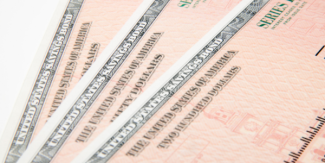
What is an I bond and why do I keep hearing about them?
Friday, May 20th, 2022
Greetings,
As inflation continues to headline our 24-hour news cycle and we all feel the pinch at the gas pump, in the grocery store and beyond, investors are looking anywhere and everywhere for investment returns that can keep pace with rising prices on both goods & services. But where do you turn when the S&P 500 is down -17.68% AND the Barclays US bond index is down -9.48% year to date? This exact situation is why many of you are hearing about I bonds perhaps for the first time. I bonds, which offer both a fixed rate of return + an inflation adjusted rate sound like a dream, but as with any investment vehicle, there are pros + cons. Below, we hope to help demystify and shed some light on the Series I bond.
First things first! What are they? I bonds are backed by the federal government (meaning: they’re relatively safe), and they combine two interest rates to get their yield: one fixed by the Treasury and one based on the consumer price index (CPI) – our trusty inflation measurement; each is updated every May and November. The yield now? 9.62%.
Additionally, I bonds have tax benefits. You receive the interest at the maturity of the bond or when you redeem it at the Treasury, not while you own it, so you won’t owe taxes until you’ve liquidated or the bond has matured. And bonus points, you’ll just pay federal, not state taxes. And here’s the cherry on top: if you use the interest to pay for college, you won’t owe any taxes at all.
But there are drawbacks. There’s a $10,000 annual cap on how much you can spend on I bonds, although you can tack on another $5,000 if you use your tax return to get them. You’re also not allowed to cash out your I bonds for at least 1 year, and you won’t get all the interest (you’ll lose out on 3 months of it) unless you wait 5 years. That is what we refer to as a bit of a liquidity conundrum. You must be very confident you can live without access to those funds or you forfeit the most attractive part of buying the I bond in the first place! Another drawback – if inflation goes down (and we know the Fed is hard at work trying to accomplish this) the rate of the bond will drop as well.
Finally, you can’t buy I bonds from your financial advisor, and there’s no ETF or mutual fund alternative. The only verified place to purchase them is through the Treasury Direct website - https://www.treasurydirect.
We hope you found this information helpful and while it is not an endorsement to purchase I bonds, we’ve had several clients inquire about them. As you know, we hope to be an educational resource for you, so please feel free to contact our team with any additional questions or concerns. Our conviction remains that the markets are sound and while volatility never feels good, it is normal and to be expected.
With gratitude,
Your Team at Beacon Financial Planning

